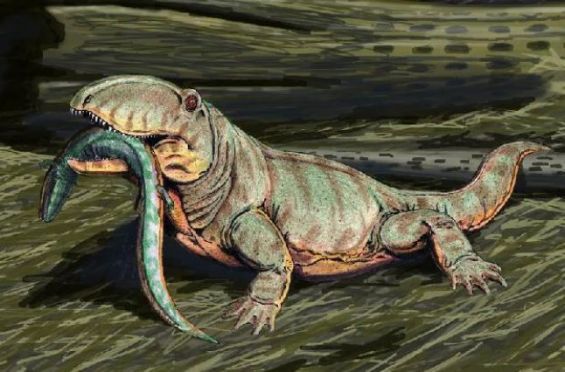The first animals that managed to control their body temperature based on their external environments have lived in Morocco between 270 and 222 million years ago during the Permian and the Triassic era. The discovery was proved through a study published yesterday by the 2017 eLife scientific magazine, stating that a number of fossils found in Morocco, South Africa, Lesotho, and China are Endothermic.
According to the study, «Endothermic animals share several characteristics, including insulating layers – like fur or feathers – that keep the body warm, and a secondary palate that separates the mouth and nose for continuous breathing, even while eating». They have managed to survive major extinction events.
The discovery explains that these mammals were able to survive fluctuating climatic conditions because of «the acquisition of endothermy», which is a physiological generation and regulation of body temperature by metabolic means that guarantees the property or state of being warm-blooded.
To put in other words, the species were the first creatures on earth to establish a relationship linking their bodies to the surrounding environment regulating the heat based on external factors. «Their body temperature therefore traces that of their surroundings and is the most commonly occurring energy saving strategy», the survey points out.
Endothermic animals used to live in Morocco
As for the methodology maintained by scientists to find out the Endothermic fossils, it is mentioned that «nineteen new fossil apatite samples were analyzed to determine stable oxygen isotope compositions of apatite phosphate and carbonate, along with 89 samples for which oxygen isotope compositions have already been published». These samples that was found in Morocco alongside the mentioned-above countries contain «teeth and 65 bones of 90 individual tetrapods (Therapsida, Archosauriformes, Parareptilia and Stereospondyli) recovered from Permian and Triassic deposits».

For the Moroccan samples, they comprise therapid and stereospondyl bones retrieved from the «'Locality 11' of the Argana Group next to the village of Alma and housed at the Museum National d’Histoire Naturelle, Paris, France», as it is documented by the study.
The study entitled «oxygen isotopes suggest elevated thermometabolism within multiple Permo-Triassic therapsid clades» and conducted by a number of researchers led by Kévin Rey will give a scientific overview about the physical characteristics endothermic animals. The findings will also allow scientists to protect nowadays endangered species that are affected by climate change.




 chargement...
chargement...












